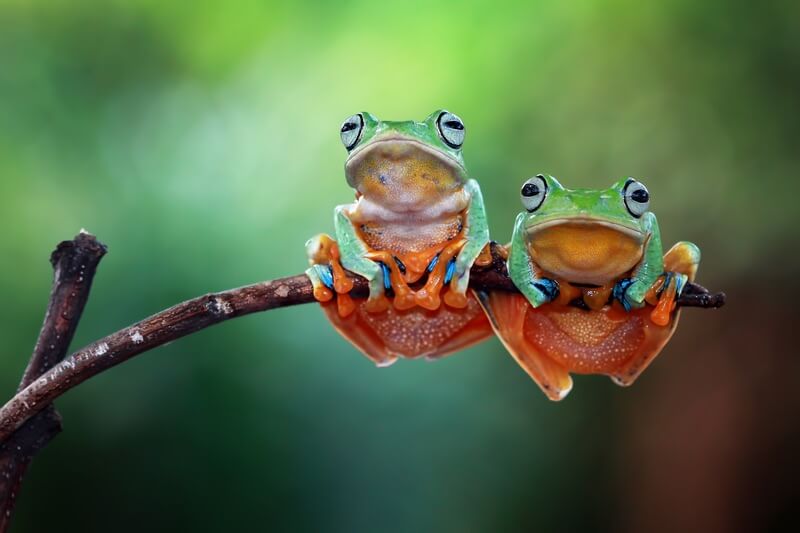There is evidence that frogs have roamed the Earth for more than 200 million years, at least as long as the dinosaurs. One of the smallest is the Cuban tree toad, which grows to half an inch long. While the life spans of frogs in the wild are unknown, frogs in captivity have been known to live more than 20 years. There are over 6,000 species of frogs worldwide. Scientists continue to search for new ones. Toads are frogs. The word "toad" is usually used for frogs that have warty and dry skin, as well as shorter hind legs.

To blend into the environment, the Budgett's frog is muddy brown in color, while the Vietnamese mossy frog has spotty skin and bumps to make them look like little clumps of moss or lichen. Many poisonous frogs, such as the golden poison frog and dyeing poison frog, are boldly colored to warn predators of their dangerous toxic skins. Some colorful frogs, such as the Fort Randolph robber frog, have developed the same coloring as a coexisting poisonous species. Although their skins are not toxic, these mimics may gain protection from predators by looking dangerous.

Like all amphibians, frogs are cold-blooded, meaning their body temperatures change with the temperature of their surroundings.
When temperatures drop, some frogs dig burrows underground or in the mud at the bottom of ponds.
They hibernate in these burrows until spring, completely still and scarcely breathing.
The Australian water-holding frog is a desert dweller that can wait up to seven years for rain.
It burrows underground and surrounds itself in a transparent cocoon made of its own shed skin.
Frogs are freshwater creatures, although some frogs such as the Florida leopard frog are able to live in nearly completely salt waters.